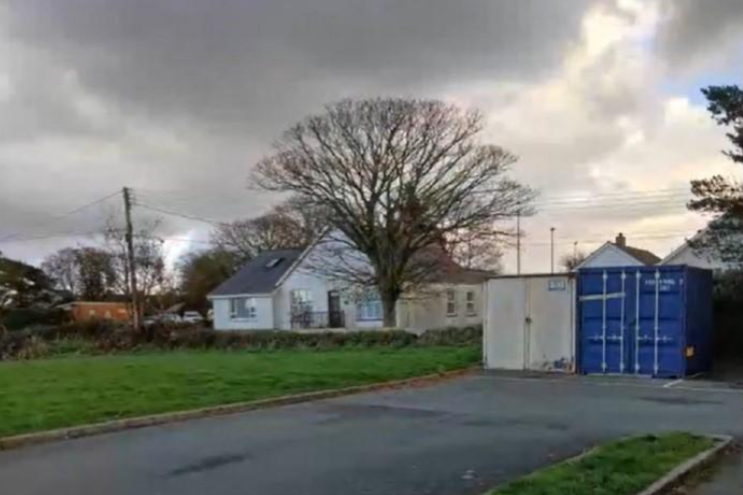Climate
Harness the Sun and reap the savings with a Solar Power system

Celtic Green Energy answers your most burning questions about Solar
Cross Hands based Celtic Green Energy are one of Wales leading renewable energy specialists who have been serving the whole of mid, south and west Wales for the last 10 years. With a small team of energy experts and installers, the company prides itself on experience, best value, best prices, high quality and aftercare service. As an early adopter, the company identified early on the huge benefits of solar power for carbon reduction and long term cost savings – last year’s energy crisis certainly highlighted the nations vulnerability to fuel security. With a growing anxiety of rising energy costs, Celtic Green Energy addressed the consumers’ confusion around solar and embarked on a summer roadshow attending regional shows, exhibitions and shopping centres. It was clearly evident that most consumers shared the same concerns, and their team of energy advisors were able to help shed some light on these issues. The most common issues are revealed here.
1. Why should I consider solar power?
The sun is a freely available natural resource that is used to energise Solar Photovoltaic panels. The panels are made up of a number of wafer thin silicon solar cells encased in a durable self cleaning weather resistant panel which in turn are linked to an inverter that generates electricity. Solar PV panel technology has been widely popularised in recent years with huge improvements in performance and cost reductions making them an affordable solution for everyone who uses electricity. If you are a high energy user such as a business, farmer or holiday home owner, a solar panel system will offer you significant reductions in your future energy costs and help sustain your business. We learn in the press of family bakers and butchers being forced out of business simply on their unsustainable rocketing electricity prices.
2. Is solar energy reliable?
Commercial solar panel systems are a relatively new phenomenon having been popularised only within the last 15 years. The solar PV panels absorb the sun’s rays during daylight including cloudy or overcast weather – if it’s daylight, they are working! Even after dark, there is a solution with Solar Batteries where excess generated electricity is stored and retrieved at night dispensing with the need for expensive National Grid power. With continually emerging technology and improving performance, Solar PV panels are guaranteed to last at least 25 years so represent excellent value for money. As there are no moving parts and performance degradation is miniscule, the solar panel system offers excellent reliability. The Solar Battery and inverters are usually guaranteed for 15 years with extended warranty programmes readily available.

3. Will it be a burden on my finances?
Purchasing a solar power system is an investment that does carry a significant upfront cost, however, this will be soon outweighed with the long term benefits and assured fuel security. As every home or business is unique, so is the design of a solar power system – the solar installer will tailor a scheme to best suit your individual circumstances including a site visit to identify the location parameters and discuss the customer’s needs. Most schemes will see the investment repaid within 4 years, some commercial schemes could be repaid in as little as 14 months, so you will no longer be subject to soaring energy prices and be reassured your investment was worthwhile. Depending on your individual circumstances, you may even be eligible for funding assistance with various prevailing Government schemes to install a solar power system.
4. How do I choose the right provider?
The million dollar question! The Solar Power industry is seeing a deluge in businesses offering installations, from the main utility providers to ‘have-a-go-Jo’s’ ready to make a quick buck. The Solar industry does have very strict regulatory guidelines and consumers are advised to check out MCS accreditation for their local suppliers. If their supplier does not offer MCS certification, they may find that their system may not be compliant with the National Grid and excludes connection and any warranty privileges. Consumers are also reminded that the cheapest solution is not always the best option, we are learning of rogue dealers ‘plug and run’ practices, leaving customers in the lurch with ineffective installations, no aftercare or warranty. Thankfully Celtic Green Energy has a longstanding provenance of quality workmanship and exemplary aftercare with the necessary credentials to provide the best possible solutions for their customers.
5. What about maintenance?
Solar Photovoltaic panels are relatively maintenance free as they have no moving parts and are self cleaning. Depending on certain locations however, some installations are advised to have annual maintenance checks for any signs of wear and tear such as extreme weather damage, moss growth, birds, detritus and traffic pollution. Given the high technology construction, the panels are relatively durable within normal conditions, but consumers are advised not attempt to maintain them themselves as this could cause unnecessary damage such as invasive pressure washers etc. Most reputable installers offer maintenance and service packages.
Sum up…
Next time you awake to a fresh morning cuppa and look out to a sunny day, remember that sunshine could be providing you with free electricity to power your kettle – as well as your washing machine, cooker, television, charging your electric car and lots, lots more! The possibilities for solar power are endless, so if you are concerned about your rising energy costs and want to do something about it, make your next step be a phone call to Celtic Green Energy who will be able to advise you on the best way forward. You can call their energy helpline 01269 500388 or learn more and visit their website at www.celticgreenenergy.co.uk
Here’s to brighter tomorrows and sunnier savings!
Climate
Urgent calls for action on Pembroke Commons flooding

TWO PEMBROKESHIRE councillors have submitted an urgent call for action following recent heavy flooding in parts of Pembroke.
Pembroke councillors Aaron Carey and Jonathan Grimes have submitted an urgent notice of motion ahead of tomorrow’s December 12 meeting of Pembrokeshire County Council following heavy flooding in the town’s Commons and Castle Pond area.
The notice of motion covers six points.
“That this council notes with concern the repeated and increasingly severe flooding experienced in our coastal, estuarial and river-fringe communities over recent weeks — in particular the flooding events affecting the Commons/Castle Pond area.
“That the council further notes that, according to correspondence from the Coastal, Rivers & Drainage Team Manager, the tipping gate at the barrage remains out of operation until mid-January due to mechanical issues; meanwhile high tide, heavy rain, wind-driven tidal surges and overspill at the sluice have combined to overwhelm the drainage/outfall infrastructure.
“That we recognise the current maintenance schedule (delayed till after the summer season) and the justification given — but further that such planning failed to foresee the likelihood of severe winter storm and surge events, which climate change makes more frequent and more intense.
“That this council therefore calls on the Cabinet to commission an urgent review of:
- The adequacy of the current drainage/outfall and tidal-sluice infrastructure (barrage tipping gate, sluice/sluice-valve, flap valve, outfall capacity) for current and projected climate/tide conditions.
- The maintenance scheduling policy for coastal and estuarial flood-risk assets, with a view to ensuring critical maintenance is completed before winter high-tide / storm-surge season, rather than — as at present — being delayed until after summer for ‘recreational / biodiversity’ reasons.
“That, pending the outcome of the review, the council should allocate appropriate emergency capital funding to remediate the barrages / sluices / outfalls at risk of failure or blockage — to safeguard residents, properties, highways and public amenities from further flooding.
“That, further, this council resolves to publish a public flood-resilience plan for the county, identifying all coastal and river-fringe ‘hotspots,’ maintenance schedules, responsible teams, and a transparent timeline for upgrades or remedial works — so residents have clarity and confidence in flood prevention measures.”
The submission also includes a question for Cabinet Member Cllr Rhys Sinnett.
“In light of the repeated flooding events across the county – including the recent overflow at Castle Pond and the acknowledgement by your own Coastal, Rivers & Drainage Team that the barrage tipping gate remains inoperable until mid-January can you explain what assessment has been made of the adequacy of our tidal outfall infrastructure in the face of current and projected future storm surges and sea-level rise?
“If no such assessment has yet been undertaken, will you commit now to commissioning an immediate structural and risk-capacity audit, with a report to full council within three months, and with proposals for funding any remedial works required — to avoid recurring damage and disruption to residents, highways, and public amenities?”
A Pembrokeshire County Council spokesman has confirmed the 11th hour call will be heard by full council tomorrow.
Image: Martin Cavaney
Climate
UK marks 25 years since first offshore wind farm began generating power

Sector now powers millions of homes and supports 40,000 jobs
THE UK today (Dec 8) marks a significant milestone: 25 years since the country’s first offshore wind farm began generating electricity. Blyth Offshore Wind Farm, built off the Northumberland coast in 2000, consisted of just two turbines producing four megawatts of power — enough for three thousand homes — and laid the foundations for what has become one of the UK’s most important energy industries.
In the space of a single generation, offshore wind has grown into the UK’s largest source of clean electricity. In 2024 it provided more than thirty-four per cent of all renewable power and generated a record seventeen per cent of the UK’s electricity overall, totalling 48.5 terawatt hours. The current fleet has a combined capacity equivalent to five large nuclear power stations.
Across UK waters, 2,878 turbines are now in operation — ten floating and 2,868 fixed — with a total generating capacity of 16.1 gigawatts. That is enough to power more than sixteen million homes each year. Industry estimates suggest that, without this development, the UK would have had to burn an additional twenty million tonnes of gas over the past twenty-five years, producing more than sixty million tonnes of CO₂.
The sector’s growth has also reshaped the economy. Nearly two thousand companies now operate within the UK wind supply chain, including one hundred and sixty factories. Their combined activity is forecast to contribute £18.2bn to the UK economy over the next decade. Around forty thousand jobs are currently supported by offshore wind — a figure projected to rise to ninety-four thousand by 2030.
Construction is accelerating. More than 7.5GW of new offshore wind is already being built and is due to become fully operational within the next two years, with a further 22GW consented through to 2033.
‘Britain is once again leading the world in clean power’
Energy Minister Michael Shanks MP said: “Twenty-five years after the first offshore wind turbines began to turn, Britain is once again leading the world in clean homegrown power. Offshore wind is at the heart of our 2030 mission – helping us reduce our dependence on volatile fossil fuel markets, lower bills for good, and support one hundred thousand jobs by 2030.”
RenewableUK’s Deputy Chief Executive Jane Cooper said the sector’s progress had brought “jobs, investment, energy security, and environmental benefits in equal measure,” adding that next month’s clean power auction could secure a record amount of new offshore capacity. “A consistent pipeline of projects is vital to trigger new investment in factories and supply chain companies,” she said.
Julia Rose, Head of Offshore Wind at The Crown Estate, said the UK’s first 25 years demonstrated “the transformative power of collaboration and strategic vision,” noting that 45 operational wind farms are now in UK waters with a 95GW development pipeline. The Crown Estate plans to bring a further 20–30GW of new leasing opportunities to market by 2030.
Ed Daniels, CEO of Venterra Group, highlighted the role of the UK’s supply chain: “Offshore wind’s success has created tens of thousands of skilled jobs, rejuvenated coastal communities and established the UK as a global exporter of expertise. Continued investment is essential to deliver economic growth and energy security over the next twenty-five years.”
Climate
Fishguard ‘battery box’ scheme near school refused

PLANNERS have refused a Pembrokeshire ‘battery box’ electricity storage unit near a Pembrokeshire town school, which has seen local objections including fears of a potential risk to nearby school children.
In an application recommended for approval at the December meeting of Pembrokeshire County Council’s planning committee, AMP Clean Energy sought permission for a micro energy storage project on land at Fishguard Leisure Centre Car Park, near Ysgol Bro Gwaun.
The application had previously been recommended for approval at the November meeting, but a decision was deferred pending a site visit.
The scheme is one of a number of similar applications by AMP, either registered or approved under delegated planning powers by officers.
The battery boxes import electricity from the local electricity network when demand for electricity is low or when there are high levels of renewable energy available, exporting it back during periods of high demand to help address grid reliability issues; each giving the potential to power 200 homes for four hours.
The Fishguard scheme, which has seen objections from the town council and members of the public, was before committee at the request of the local member, Cllr Pat Davies.
Fishguard and Goodwick Town Council objected to the proposal on grounds including visual impact, and the location being near the school.
An officer report said the scheme would be well screened by a Paladin Fence, with a need to be sited close to an existing substation.
Speaking at the December meeting, Ben Wallace of AMP Clean Energy conceded the boxes were “not things of beauty” before addressing previously raised concerns of any potential fire risk, saying that “in the incredibly unlikely” event of a fire, the system would contain it for up to two hours, giving “plenty of time” for it to be extinguished, an alarm immediately sounding, with the fire service raising no concerns.
“These are fundamentally safe, the technology is not new,” he said, comparing them to such batteries in phones and laptops.
One of the three objectors at the meeting raised concerns of the proximity to homes and the school, describing it as “an unsafe, unsustainable and unnecessary location,” with Cllr Jim Morgan of Fishguard Town Council, who had previously raised concerns of the “nightmare scenario” of a fire as children were leaving the school, also voicing similar issues.
Local county councillor Pat Davies, who had spoken at the previous meeting stressing she was not against the technology, just the location and the potential risk to pupils, said the siting would be “a visual intrusion,” with the school having many concerns about the scheme, adding it had been “brought forward without any dialogue of consultation with the school”.
Cllr Davies added: “It is unacceptable that a micro-storage unit should be proposed in this area; someone somewhere has got it wrong.”
Following a lengthy debate, committee chair Cllr Mark Carter proposed going against officers in refusing the scheme; members unanimously refusing the application.
-

 News3 days ago
News3 days agoDyfed-Powys Police launch major investigation after triple fatal crash
-

 Crime9 hours ago
Crime9 hours agoMilford Haven man jailed after drunken attack on partner and police officers
-

 Crime2 days ago
Crime2 days agoMan sent to Crown Court over historic indecent assault allegations
-

 Crime1 day ago
Crime1 day agoMan charged with months of coercive control and assaults
-

 Crime4 days ago
Crime4 days agoMan spared jail after baseball bat incident in Milford Haven
-

 Crime2 days ago
Crime2 days agoMilford Haven man admits multiple offences after A477 incident
-

 Crime8 hours ago
Crime8 hours agoTeenager charged following rape allegation at Saundersfoot nightclub
-

 Education6 days ago
Education6 days agoTeaching assistant struck off after asking pupil for photos of her body





















